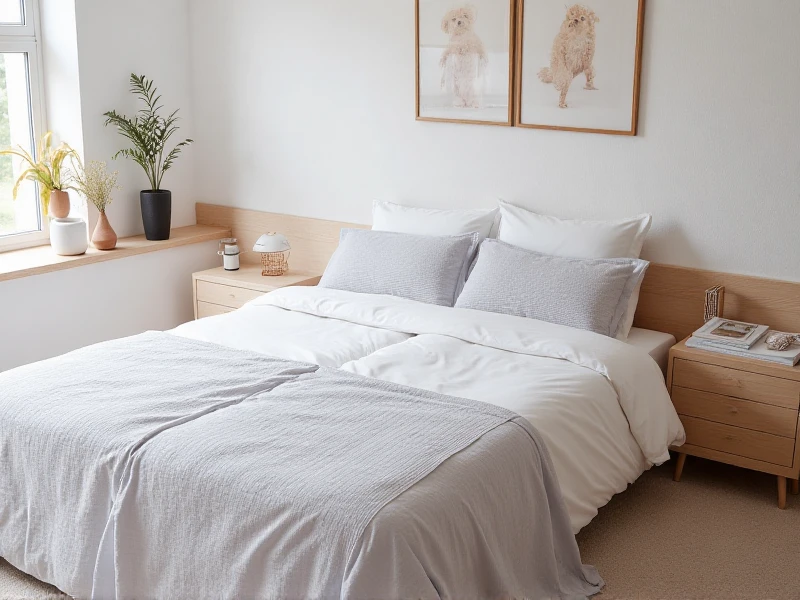Your Ultimate Guide to Pillowcases: Comfort, Care, and Style
2025-06-04

When it comes to creating a cozy and rejuvenating sleep environment, pillowcases are more than just simple covers for your pillows. They're essentials that can transform your nightly rest into a spa-like experience. Many people overlook the impact of these humble fabrics, but choosing the right pillowcases can boost comfort, enhance skin health, and even elevate your bedroom's aesthetics. In this comprehensive guide, we'll explore everything you need to know about pillowcases, helping you make informed decisions for a better night's sleep. From materials and benefits to practical care tips, you'll discover why investing in quality pillowcases is worth every penny.
First, let's dive into the materials that define pillowcases. The most common options include cotton, silk, sateen, and microfiber—each offering unique advantages. Premium cotton varieties, such as Egyptian or Pima cotton, remain popular for their breathability and softness. They wick away moisture efficiently, making them ideal for year-round use, especially if you tend to get hot during sleep. If your goal is pampering your skin and hair, silk pillowcases are a superstar choice. Their smooth texture reduces friction, minimize wrinkles, fight frizz, and retain moisture—perfect for preventing overnight hair breakouts or those annoying "sleep creases." For a luxurious feel that mimics silk without the high cost, consider sateen alternatives with a satiny weave; they create a subtle shine and enhance bedroom elegance. Microfiber, on the other hand, is practical for everyday users, known for being durable, low-maintenance, and budget-friendly, though it may trap heat in humid conditions. By understanding these options, you can select pillow cases that align with your lifestyle, such as switching to cotton for summer and silk for winter skincare routines.
Beyond materials, pillowcases offer tangible health benefits you shouldn't ignore. For starters, the right fabric can reduce allergens like dust mites or pet dander accumulating in your bedding. Hypoallergenic options like organic cotton or bamboo-derived blends include natural antimicrobial properties, acting as a protective barrier for sensitive skin and minimizing issues like irritation or acne. Improved sleep hygiene ties directly to this, as clean and breathable fabrics prevent sweat buildup that breeds bacteria—after all, spending hours with your face against a surface means that pillow case is doing much of the work overnight. Plus, for busy individuals, swapping out pillowcases regularly can help maintain overall freshness and even support better breathability during deep REM sleep cycles. Think of it as an investment in your wellness: better pillow cases contribute to fewer disruptions, leading to a more energized start to your day.
Now, how do you choose the perfect pillowcases for your home? Size matters—ensure you match your bedding to pillow dimensions to avoid ill-fitting covers that slip off or feel tight. Standard pillow sizes range from small travel ones to larger king types, so measure your pillows before purchasing to prevent hassle. Pay attention to technical specs like thread count: Generally, higher counts (from 300 to 800) indicate denser, softer fabrics, but avoid misleading numbers; focus instead on reputable brands with certifications like OEKO-TEX for safety. Weave styles are another key factor—while percotton is crisp and durable for everyday use, flannel weaves add warmth and plushness in colder months. Personalization options, such as prints or monograms, can also infuse style into your bedroom décor. I find that starting with a trial set of different materials helps; many retailers offer sample bundles or free returns, letting you test pillow cases firsthand without commitment.
Caring for your pillowcases prolongs their life and effectiveness. Regular washing is essential—every one to two weeks for frequent use—to eliminate oils and debris that build up. Always follow care labels: Silk pillowcases often require cold water, mild detergents, and air-drying to prevent snags, while cotton versions can handle warm water and tumble drying on low heat. Avoid harsh chemicals when possible, as they degrade fabrics over time. For storage, neatly folding pillow cases into linen closets ensures they stay wrinkle-free and easily accessible. Quick tip: Rotate between multiple sets to maintain consistent use and spread out wear. Proper care not only extends the lifespan of your pillowcases but also maximizes those benefits, like skin-friendliness, long after purchase.
In wrapping up, pillowcases are unsung heroes of your sleep routine that deserve thoughtful consideration. Upgrading to high-quality options can enhance comfort, boost skin and hair health, and even add a touch of personal flair to your space. Don't settle for subpar covers when choices abound—start by evaluating materials that suit your needs and prioritize care for lasting results. Remember, your pillow case is your nightly partner; treat it well, and you'll wake up feeling refreshed and ready to conquer the day. Take the leap today to elevate your bedding essentials!
Category: